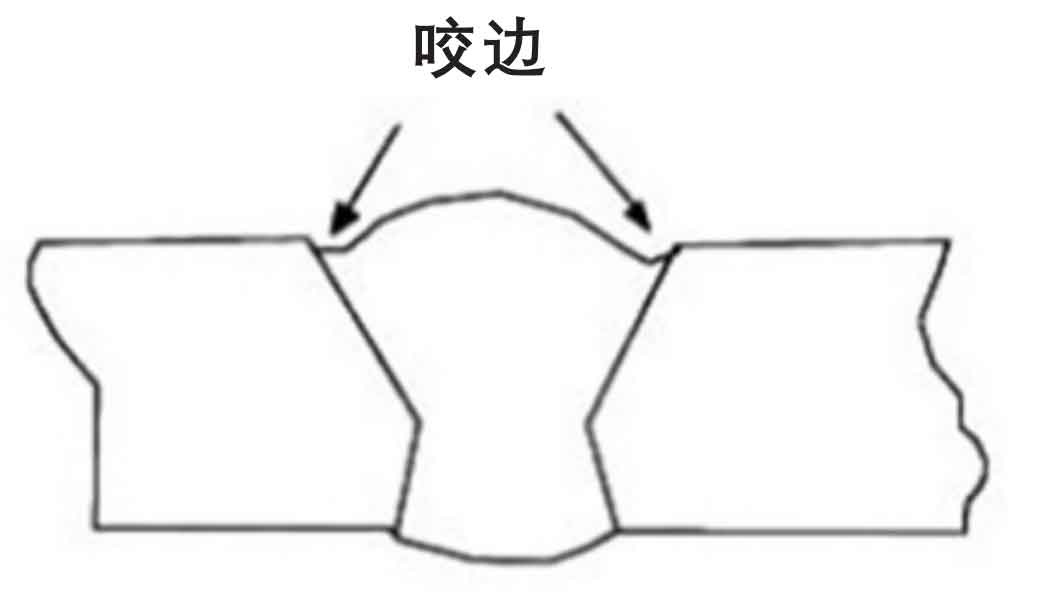Your Complete Handbook to Preventing Weld Undercut Like a Pro
Your Complete Handbook to Preventing Weld Undercut Like a Pro
Blog Article
Recognizing the Causes and Solutions for Undercut Welding in Steel Fabrication Processes
In the realm of steel manufacture procedures, the event of undercut welding poses a considerable difficulty that requires a thorough understanding of its reasons and sensible solutions. The elaborate interplay of different elements during welding operations can cause this unfavorable sensation, affecting the architectural stability and general high quality of the welded joints - Preventing weld undercut. By exploring the root causes of undercut welding and exploring effective restorative actions, fabricators can boost the criterion of their handiwork and make certain the manufacturing of remarkable steel elements
Usual Reasons For Undercut Welding
Regularly overlooked in metal construction, undercut welding takes place due to various elements that demand careful focus and proficiency to be successfully minimized. In addition, improper welding techniques, such as making use of the wrong welding angle or travel speed, can also contribute to undercut development. The choice of welding parameters, such as voltage, current, and wire feed rate, plays a significant duty in the event of undercut welding.
Influence of Incorrect Welding Parameters
Inaccurate welding criteria can significantly endanger the honesty and top quality of bonded joints in metal fabrication processes. The influence of wrong welding specifications materializes in different ways, leading to architectural weak points and problems in the welded components. One critical facet impacted by incorrect welding parameters is the infiltration depth of the weld. Insufficient heat input because of reduced welding currents or exceedingly high traveling rates can cause insufficient fusion between the base metals, resulting in incomplete joint infiltration and deteriorated bonds. Conversely, extreme warm input brought on by high welding currents or slow-moving travel rates can result in too much and burn-through support, producing a breakable and unsteady weld structure. Additionally, inaccurate parameters such as incorrect voltage settings or incorrect electrode angles can add to unpredictable weld bead profiles, absence of combination, and raised possibilities of issues like undercutting. Therefore, careful attention to welding specifications is paramount to make sure the manufacturing of premium welds with the wanted mechanical properties and structural honesty.
Impact of Improper Torch Angle
Incorrect torch angle in welding operations can significantly influence the top quality and stability of the final weld joints in metal fabrication procedures. The lantern angle plays a critical duty in figuring out the warm input and distribution throughout welding. When the lantern angle is inaccurate, issues such as damaging can develop. Undercutting is a common welding defect where a groove creates along the weld toe, deteriorating the joint and jeopardizing its architectural stability.
A torch angle that is as well steep can cause insufficient penetration, insufficient fusion, and raised spatter. On the other hand, a torch angle that is also shallow can lead to too much penetration, burn-through, and distortion of the base product. Preventing weld undercut. Correct torch angle is necessary for guaranteeing constant weld top quality, strength, and look
To stop damaging and other problems brought on by improper torch angles, welders must be educated to maintain the correct lantern angle throughout the welding procedure. Regular tracking and change of torch angles during welding can help my site attain sound welds with marginal flaws.
Function of Inadequate Welding Methods

One more element of poor welding strategies is improper weld preparation. Inadequate cleaning of the base click for more info metals, wrong joint layout, or not enough side prep work can all contribute to undercut welding. Moreover, inadequate shielding gas protection or utilizing the wrong sort of gas can result in incomplete fusion and the formation of undercut defects.
To address the role of poor welding strategies in steel construction processes, it is important to offer comprehensive training for welders. Proper education and learning on welding specifications, joint preparation, and shielding gas option can aid stop undercut welding and guarantee premium welds in metal manufacture tasks.
Efficient Solutions for Undercut Welding
Dealing with undercut welding in metal manufacture needs executing effective remedies to visit improve weld quality and architectural stability. One of the key services to combat undercut is to readjust welding parameters such as voltage, existing, and travel rate to make sure proper warm input and fusion. By fine-tuning these setups, welders can avoid too much melting of the base metal and filler product, minimizing the possibility of undercut development.
Furthermore, correct joint preparation is crucial in stopping undercut. Guaranteeing tidy base metal surfaces free of pollutants and making use of the suitable bevel angle can aid promote much better weld infiltration and decrease the danger of undercut - Preventing weld undercut. Employing suitable welding methods, such as oscillating the lantern or weaving, can also help in dispersing heat evenly and filling up the weld joint adequately, lessening the opportunity of undercut defects
Additionally, choosing the proper welding consumables, consisting of electrodes and filler metals, is vital in alleviating undercut. Making use of products with appropriate chemical compositions and mechanical buildings can contribute to achieving sound welds with minimal undercut. Regular evaluation and quality assurance procedures must additionally be applied to identify and address undercut concerns promptly, ensuring the total honesty of made steel elements.

Final Thought
In final thought, comprehending the causes and solutions for undercut welding in steel manufacture procedures is important for accomplishing premium welds. By dealing with common reasons such as inaccurate welding specifications, improper lantern angle, and poor welding methods, welders can prevent damaging and make sure strong, durable welds. It is necessary to pay focus to these aspects and execute effective remedies to enhance the overall welding procedure and final item high quality.

Report this page